1967 Pace Car
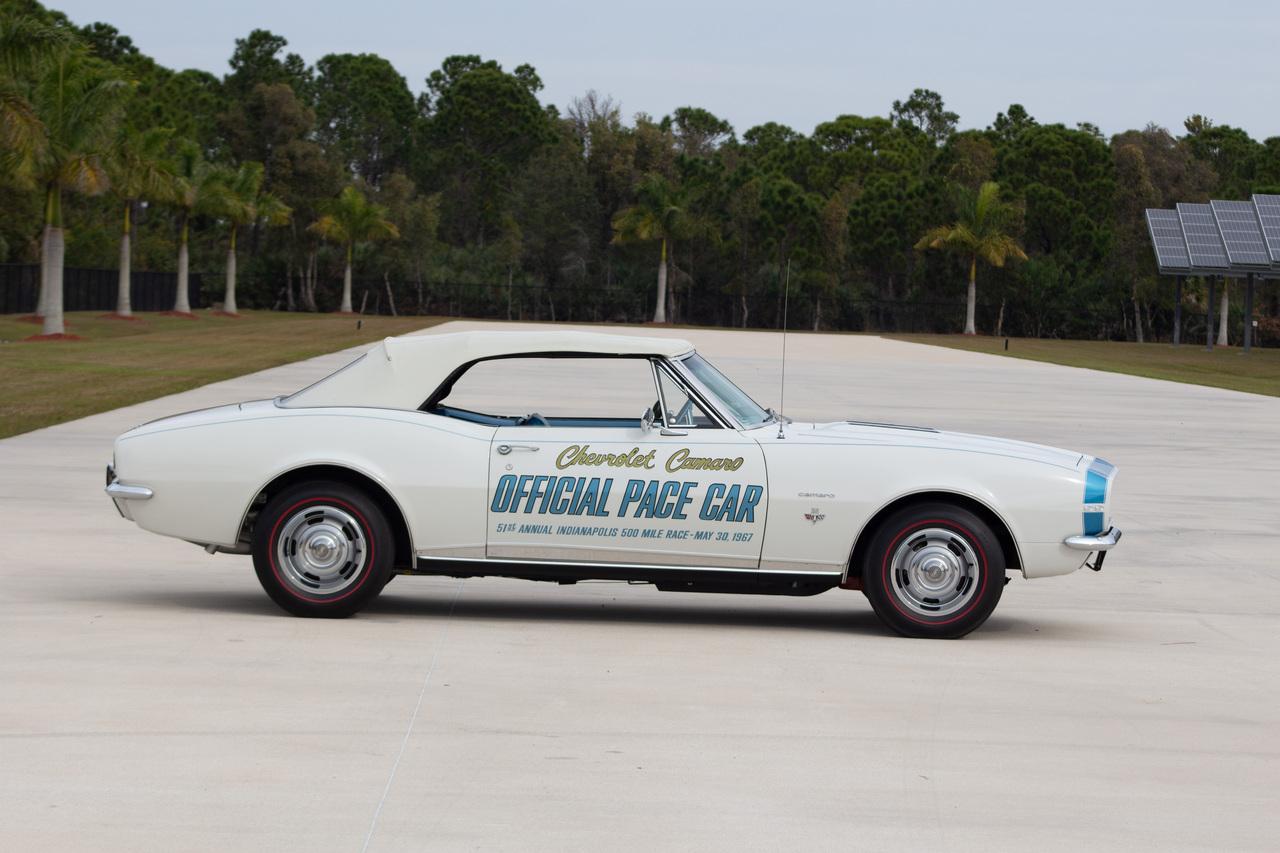
The descriptions of the Classic Cars in the Directory were partly generated or supplemented with the help of artificial intelligence (AI). The content may occasionally not always be entirely accurate or factually correct despite careful checking.
The Camaro Pace car from the year 1967 is a highly coveted and sought after vehicle among classic car enthusiasts. This particular Camaro model was used as a pace car at the Indianapolis 500 race and represented the pinnacle of innovation and engineering from Chevrolet. The technical details of this car are truly remarkable and showcase the ingenuity of the designers and engineers that worked tirelessly to create such a masterpiece.
One of the most notable features of the Camaro Pace car is its engine. The model came equipped with a 350 cubic inch V8 engine that was capable of producing up to 295 horsepower. The engine featured a four-barrel carburetor and was coupled with a four-speed manual transmission to provide a driving experience unlike anything else. This engine was designed for performance and provided the car with an impressive acceleration, allowing it to reach high speeds in mere seconds.
In addition to the powerful engine, the Camaro Pace car also featured a host of other technical innovations. For example, the car was fitted with a stiffened front suspension system that featured a larger stabilizer bar, thicker control arms, and a reinforced subframe for improved handling and stability at high speeds. The car also featured power-assisted front disc brakes that improved stopping power and reduced the risk of brake fade over extended use.
The exterior of the Camaro Pace car was also designed with technical details in mind. The car's striking white-and-blue color scheme was painted using an advanced DuPont acrylic lacquer paint that was specially formulated to resist fading and wear. The car also featured a unique front grille design that featured an egg-crate pattern and a chrome surround that emphasized the car's sporty and aggressive stance on the road.
Inside the car, the technical details continued to impress. The car featured a specially designed instrument panel that housed a large speedometer gauge, fuel gauge, tachometer, and other vital vehicle information. The car's bucket seats were designed to provide maximum support and comfort during prolonged driving, and the floor-mounted shifter added an extra touch of sportiness to the driving experience.
Overall, the Camaro Pace car from 1967 was a masterpiece of engineering that showcased some of the most advanced technical features of its time. From its powerful engine to its advanced suspension, brakes, and exterior design, this car represented the pinnacle of automotive innovation and design. For those lucky enough to drive or own one of these legendary vehicles, the experience is nothing short of breathtaking.
Milestones
- In January 1967, the Chevrolet Camaro was selected as the official pace car for the Indianapolis 500 race. - A special "Indy 500 Pace Car" version of the Camaro was created with distinctive white paint and blue racing stripes. - Only 100 replicas of the pace car were produced for sale to the public. - The pace car was powered by a 325-horsepower, 5.7-liter V8 engine, coupled with a 4-speed manual transmission. - The interior of the pace car included blue bucket seats and a special console with Rally Sport gauges. - The Camaro pace car was driven by actor Anthony Joseph "A.J." Foyt, Jr. during the Indy 500 race.Technical
• Engine: 396 cubic inch V8 • Power: 325 horsepower • Transmission: Four-speed manual • Suspension: Front coil springs, rear leaf springs • Brakes: Front disc brakes, rear drum brakes • Wheels: 14-inch Rally Sport wheels • Tires: F70-14 Firestone Wide Oval tires • Exterior paint: Ermine White with blue and orange rally stripes • Interior: White vinyl bucket seats, console with floor shift • Additional features: RPO L35 engine option, power steering, power brakes, AM/FM radio, rear antenna, auxiliary lighting, and a special hood with integrated cooling vents.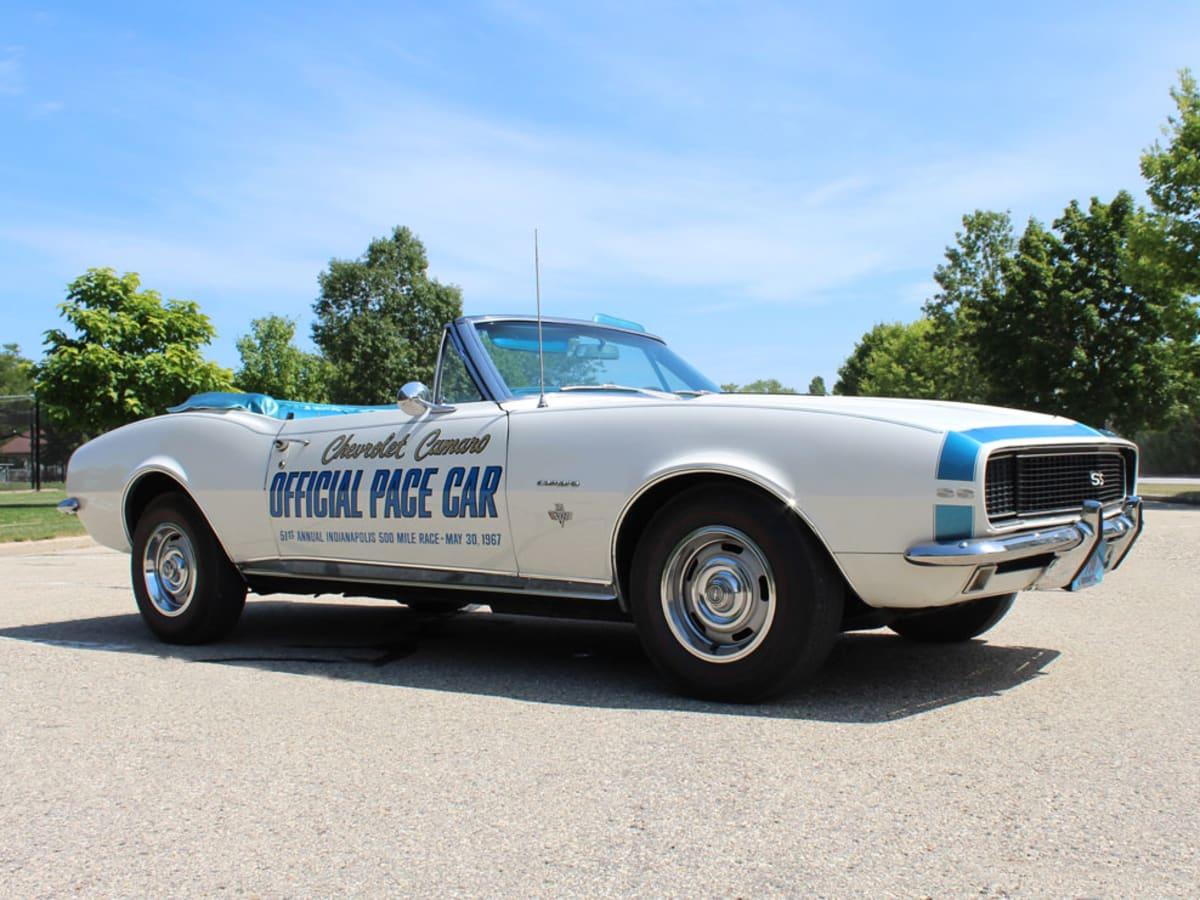
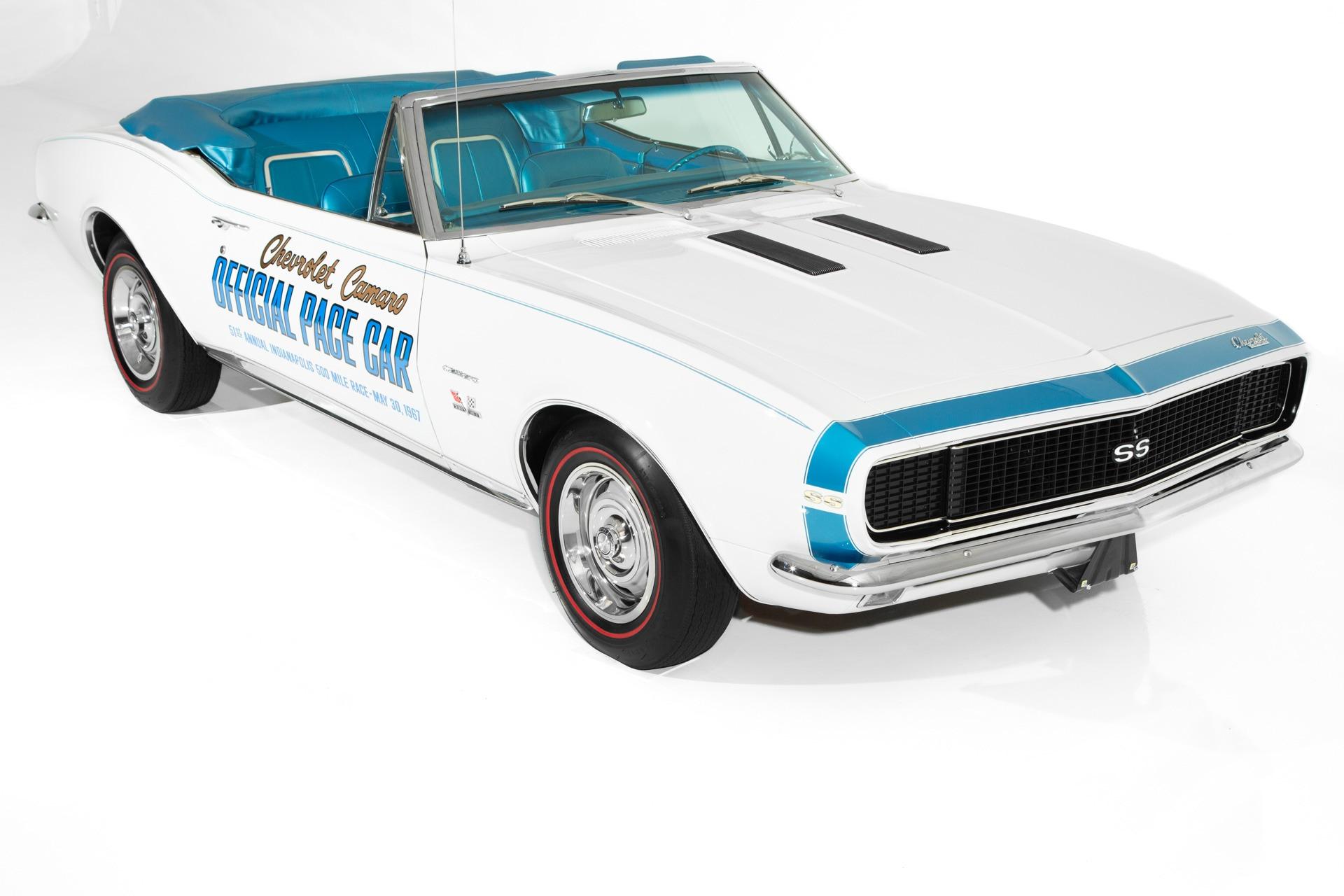
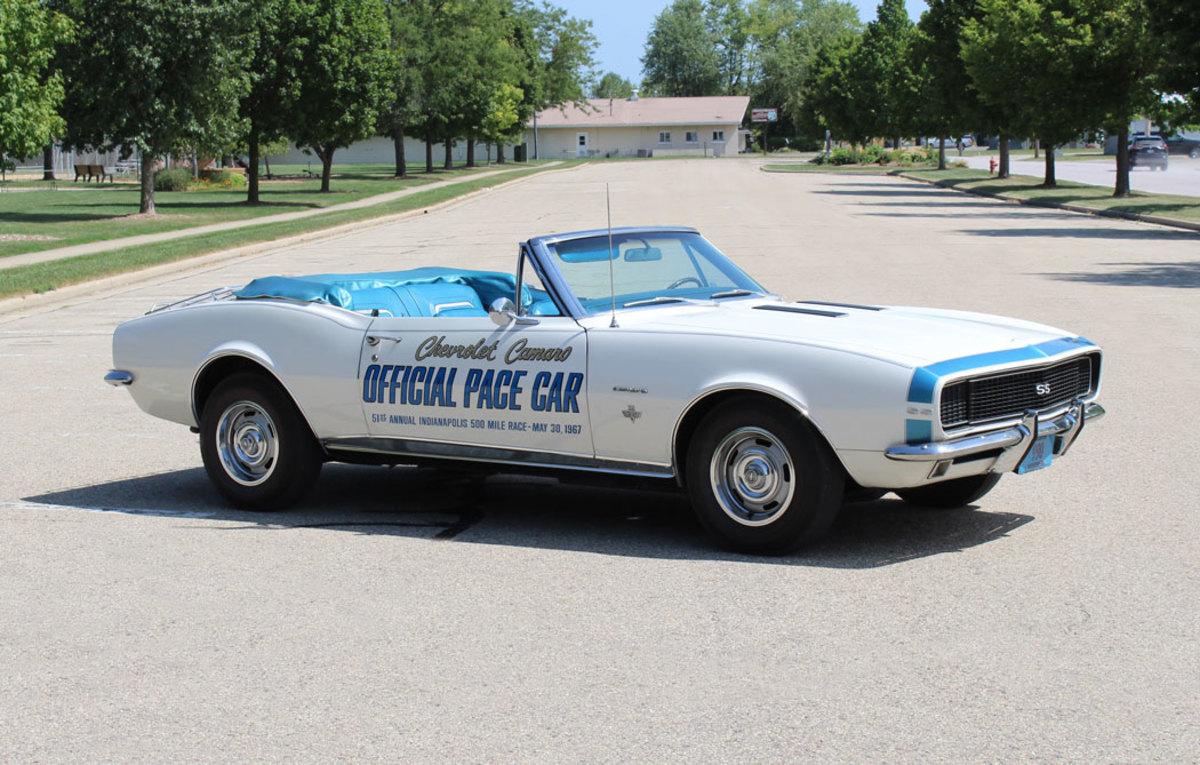
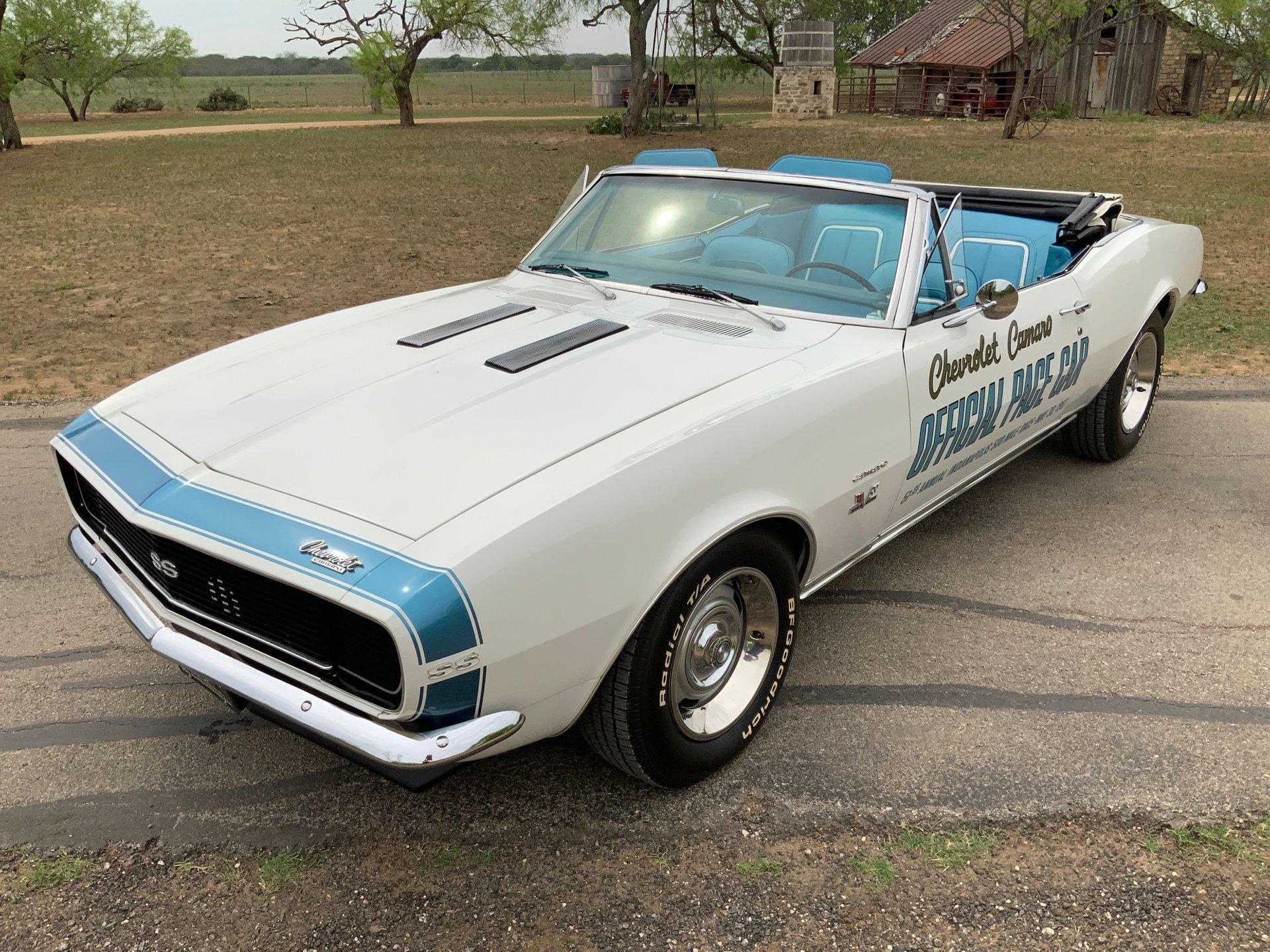
SUPERMIND TRIVIA